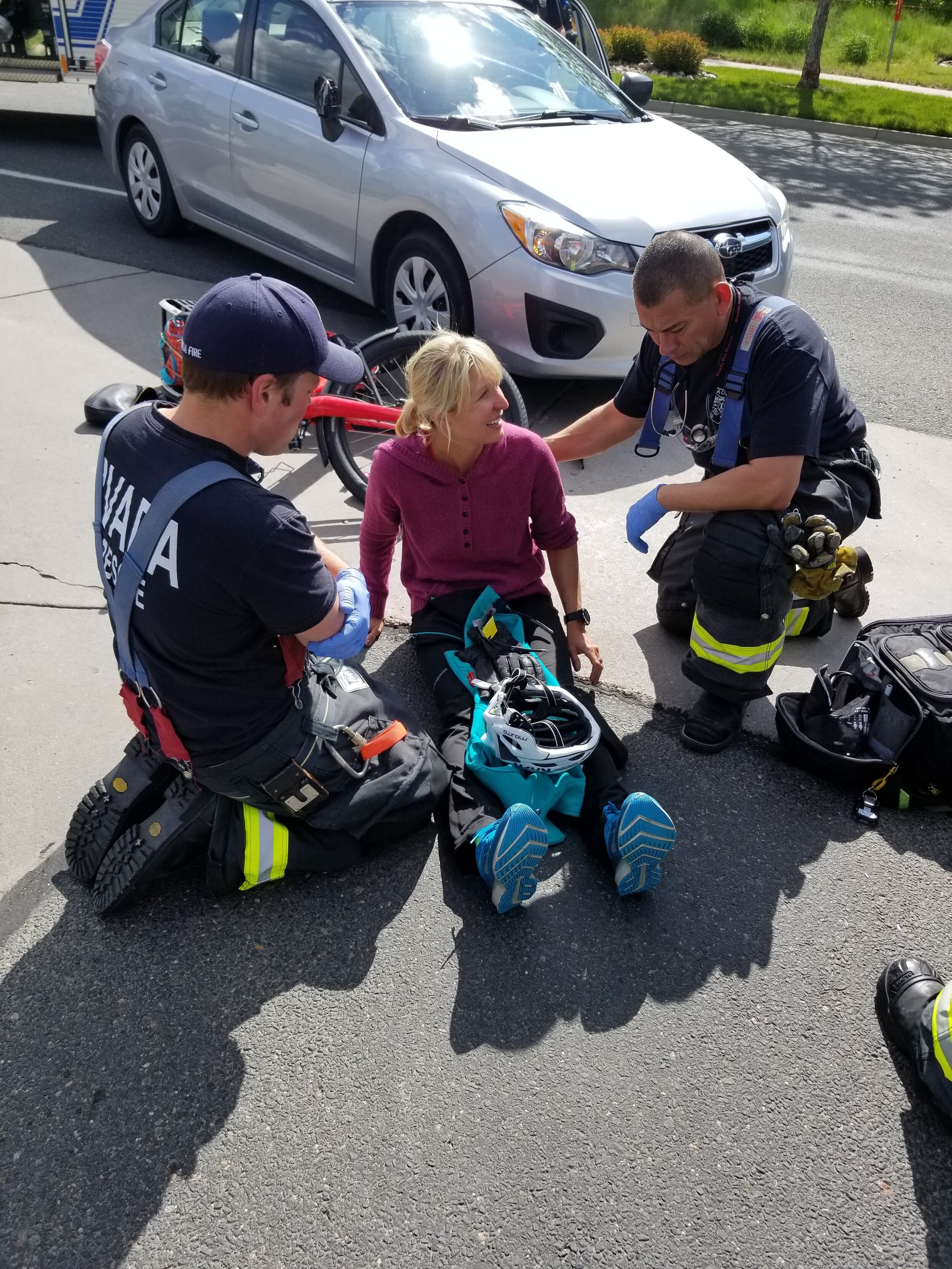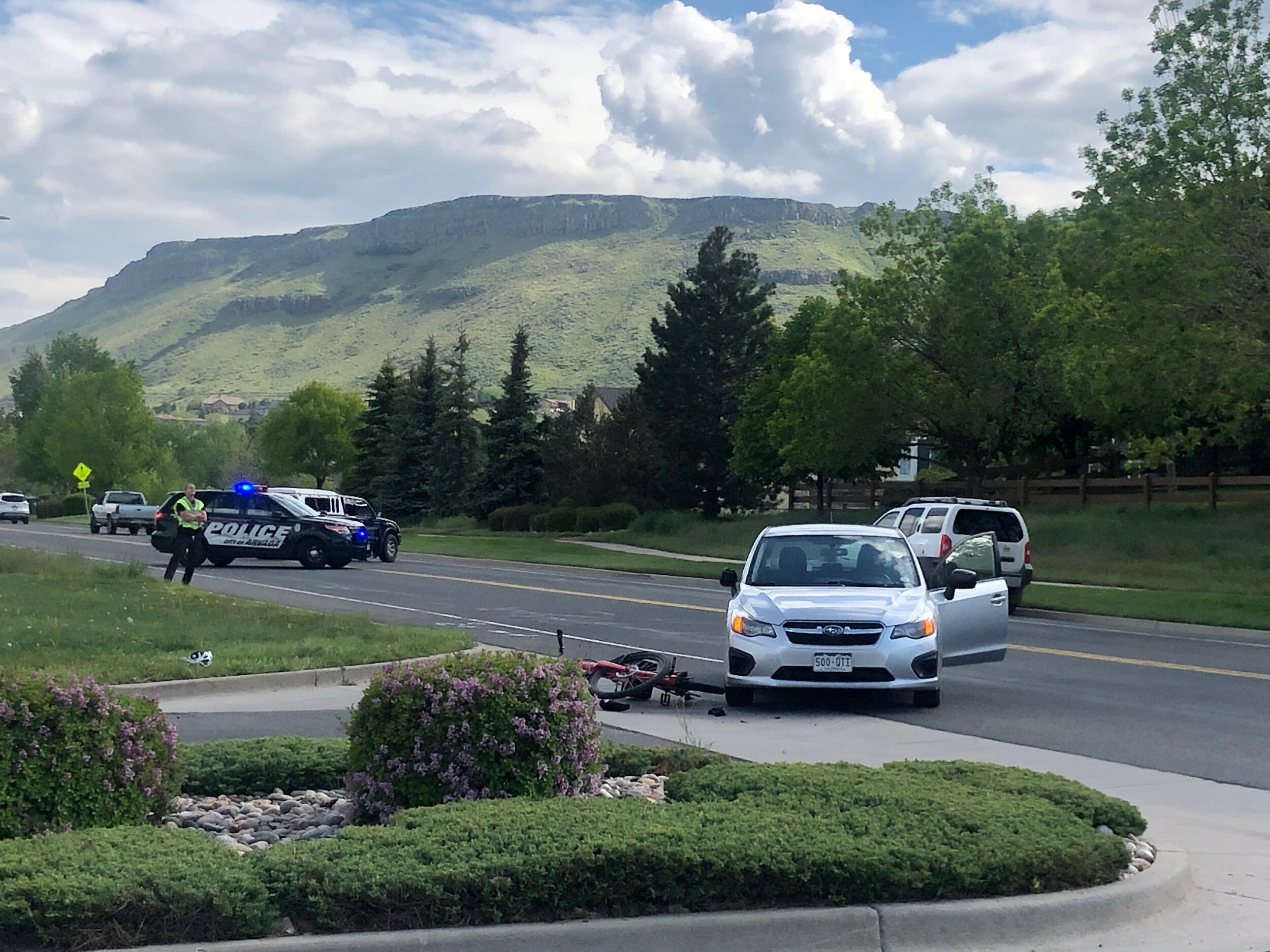Inglis Family Hopes Verdict Will Deter Impaired Driving
Left to Right - Rich Kaudy, Megan Hottman, Mike Inglis, Julie Erffmeyer, and Keith Erffmeyer
A Jefferson County jury awarded Gwen Inglis’ family a $353 million verdict on December 6, 2022 as a result of a wrongful death civil lawsuit. Megan Hottman and Rich Kaudy of The Kaudy Firm, Megan’s mentor and trial partner, represented Gwen’s husband, Michael, and her Estate.
The six-person jury heard evidence and testimony for a day and a half before reaching its verdict. The verdict breaks down as follows:
$100 million in non-economic damages, for pain and suffering,
$3 million in economic damages, for the loss of Gwen’s income, and
$250 million in punitive damages.
It is important to note that this was not a settlement. A settlement occurs when both parties agree to a resolution before trial. This was a verdict reached by a jury following evidence and witness testimony presented at trial. It is very uncommon to see a verdict of this size in JeffCo or Colorado.
We are hoping this verdict is used as a precedent in future cycling cases and that other lawyers representing injured or killed cyclists will point to this verdict in their cases and say—this is what you should do here as well. We want all drivers who hit cyclists getting hit with these kinds of verdicts and monetary consequences.
Megan Hottman
Although there is no amount of money that will bring Gwen back, we hope that this verdict will send a message to drivers that driving under the influence of drugs or alcohol is not acceptable. In the words of Gwen’s husband, "No amount can bring back Gwennie, but $350 million is a tribute to Gwen's amazing character."
Gwen Erffmeyer Inglis
Gwen, a 2019 US Masters road race champion in the 45-49 age group, was just 46 years old at the time of her death. On May 16, 2021, she and her husband were out on a training ride in Lakewood, CO and were riding in a designated bike lane on Alameda Parkway. It was a Sunday morning at 10:00 a.m. when Ryan Montoya, the driver, struck Gwen from behind after drifting into the bike lane with his vehicle. Montoya nearly hit Michael, who was riding behind his wife, just seconds before the crash. According to witness testimony, both Gwen and her bike were catapulted in the air landing about twenty feet from where she was hit. The forensic pathologist ruled the cause of death multiple blunt force injuries. Montoya was coming back from Blackhawk and driving under the influence of alcohol as well as methamphetamine, Xanax and marijuana. He was also sleep-deprived and had been driving back and forth to Blackhawk since that Friday.
Montoya pleaded guilty to vehicular homicide-driving under the influence in April 2022 as the result of a plea deal. In June 2022, a judge sentenced him to eight years in prison which was the maximum sentence the Judge could hand down based on the plea deal. Montoya will be eligible for parole in 2025.
Prior to killing Gwen, Montoya was convicted of possession and distribution of a controlled substance and a 2014 DUI. Just ten days before Gwen’s death, Montoya was charged with DUI in Gilpin County.
Photo by Natalie Starr
Montoya has a right to appeal the verdict in the civil lawsuit.
Media Coverage
Bicycling - $353 Million Verdict Awarded in Death of Cyclist Gwen Inglis
Bicycling - What Does a $353 Million Verdict Mean When a Cyclist Is Killed?
VeloNews - Cyclist Gwen Inglis’ family awarded $353 million verdict in civil lawsuit against driver
cyclingnews - $353 million verdict awarded in death of cyclist Gwen Inglis
Canadian Cycling Magazine - $353 million awarded to family of U.S. masters champion killed in motorist collision
Denver Post - Colorado jury awards $353 million to husband of beloved cyclist killed by drunken driver
Westword - Gwen Inglis, RIP: Husband on $353 Million Verdict in Cycling Champ's Death
Jeffco Transcript - Jury awards $353 million to family of cyclist Gwen Inglis killed by driver
Denverite - Family of cyclist killed by impaired driver in Lakewood wins $353 million in civil suit
CBS Colorado - Jury awards family of Colorado cyclist Gwen Inglis who was killed by driver $353 million in civil case
Fox31 - $353 million awarded in DUI killing of pro cyclist Gwen Inglis
Denver7 - Jefferson County jury awards $353M verdict in case against driver who killed bicyclist
#BeLikeGwen
Blog post Written by Maureen Massidda - thank you Maureen !! 🙏🏼







